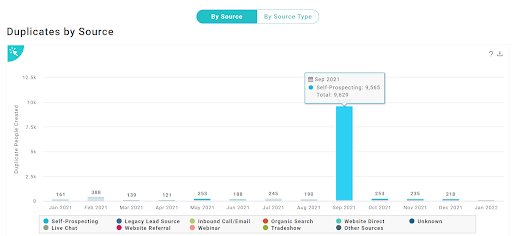All Marketo users, from novices to experts have those questions they dread hearing from their Marketing leadership team—and they’re always asked on the spot. Digital Pi’s consultants are asked these same questions by our clients and we sometimes struggle to provide a quick and concise answer to them too! Even when we have an answer, it can be hard to provide proof and a visual description to accompany the answer.
Let’s look at the Marketo questions you dread being asked and see how we help clients under pressure provide a thorough answer!
1. How “healthy” is our Marketo instance? How can we improve it and keep it that way?
If someone were to ask you about the health of your Marketo instance, you might know if it’s very bad, but most of the time you’d probably answer “I think it’s okay.” Can you really KNOW that it’s okay? What you need is a snapshot that shows you how close you are to your daily API call limit, how long the sync from Salesforce is really taking right now, and any sudden spikes in your database or recent influx of duplicates. Monitoring all of these can be overwhelming to handle all on your own, but it’s better to be proactive in tracking these areas than reactive in a crisis.

2. Why is Marketo running so slowly?
Everyone thinks their Marketo instance is slow. We’re so used to speed that when we use a system that has a lot running in the backend, we become hyper-aware of any perceived slowness. But what if your instance really IS slow? What if it’s so slow that your campaigns can’t fire correctly because it takes data so long to sync back from Salesforce? How do you identify what’s causing the major delays and can it be fixed?
One Digital Pi client was experiencing some system slowness so they turned to Omega, a sort of mission control for Marketo. With Omega, they were able to see that 90% of their Change Data Value activities were coming from Salesforce.
3. Why are we over our API limit?

Whoops! Somehow no one noticed you were creeping up on your API limit, and now you’re frequently over it!
Marketo will let the overage slide for a little while, but then they’ll start charging you more for your instance.
Do you know how many API calls your instance is making daily? Or why?
For one Omega user, an old API user leftover from an acquisition was to blame for a large number of API calls every day. Another client has 8 API users, mostly for Marketo integrations, that are always using a large volume of calls between them every day. They currently are staying under their limits with these users, but if they were to have a sudden spike in calls, it would push them over.
4. Where did all these duplicate records come from?

If you’re the admin of your Marketo instance, you might feel pretty confident that nothing goes on in your instance without you knowing about it. You’ve got your team’s user roles locked down and require them to check in with you before any list imports. But then…Oops! You forgot about your Salesforce team.
One Omega user discovered that someone had imported a large group of records directly into Salesforce the previous month, causing a huge spike in duplicates that no one noticed until Digital Pi was doing a walkthrough of how to use Omega.
Duplicate records can cost you big time. They take precious space in our database, can create confusion in campaigns and skew reporting. The best way to handle duplicates is to prevent them, but using Omega can help you keep an eye out for those sneaky duplicates that still find there way in.
5. Are there any old smart campaigns running that should not be?
With the recent boom in MOPs roles and demand for experienced Marketo users, chances are that while you might be the admin of your Marketo instance, you probably aren’t the one who originally set it up. You inherited it from someone else who may or may not have done a good job transitioning you into their process. How do you know if they deactivated old campaigns before archiving them? What if old nurtures where everyone has exhausted the content are still live and just waiting for new people to qualify to receive old and outdated emails? Anytime you make changes in the instance, there’s a chance you could be triggering an avalanche of old campaigns. You need to be able to find any that are still active without digging through your entire instance.
The Answers to Your Most Dreaded Questions
The best way to make sure you’re ready to answer these 5 dreaded questions and to feel confident in the health and longevity of your Marketo instance is to always be proactive and be monitoring your data. That’s why our team of developers created Omega.
“Omega is a performance management tool for Marketo. It allows you to see operational insights, view overall performance, get meaningful data and metrics, and be more proactive than reactive around Marketo issues.”
-Bill Lundy, Chief Technology Officer, Digital Pi, and co-creator of Omega
Omega provides a snapshot into your instance, but it’s not a one-time check-in. Digital Pi consultants check their clients’ Omega accounts daily, looking for abnormalities in smart campaigns, database size, API calls, etc. Having a consultant partner who is keeping an eye on the health of your Marketo instance gives you the peace of mind to focus on getting your organization’s marketing operations to be the best it can be and will ensure you’re prepared when one of these 5 dreaded questions comes your way.


